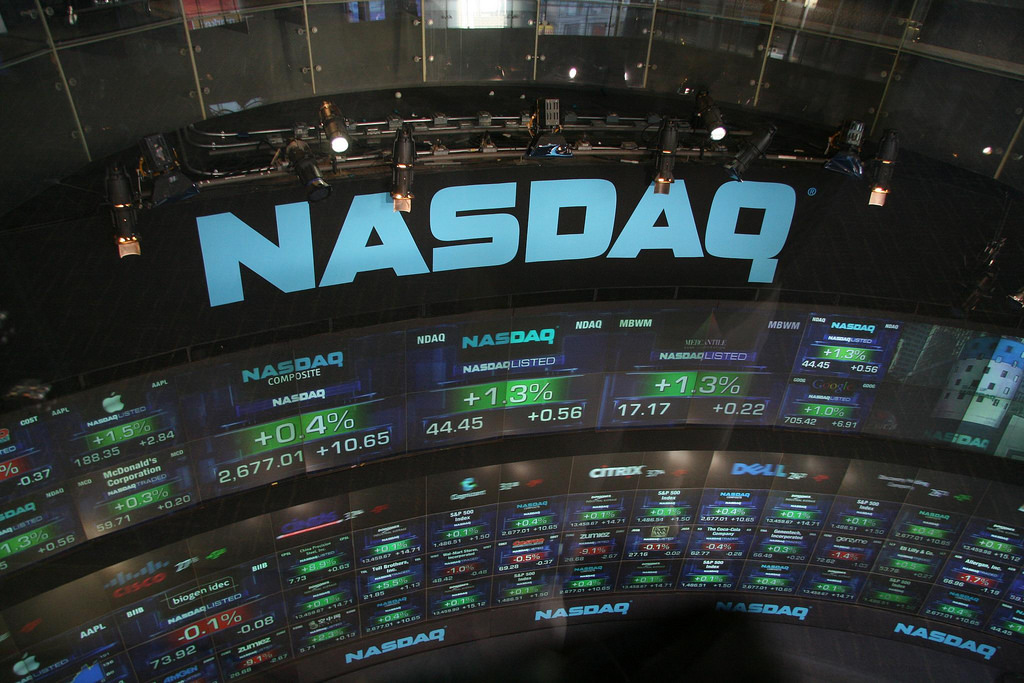Could MARA Holdings Follow MicroStrategy to Nasdaq-100?
15.12.2024 19:00 1 min. read Alexander Stefanov
MicroStrategy, led by Michael Saylor, has recently joined the Nasdaq-100 Index, a move that has sparked significant attention in the Bitcoin community.
The company’s strategy of using Bitcoin to safeguard its reserves has not only driven interest in its stock but has also aligned its performance with Bitcoin’s growth. With this Nasdaq-100 inclusion, analysts believe MicroStrategy could be a strong contender for the S&P 500 in 2025.
Saylor’s prediction extends beyond his company—he has suggested that MARA Holdings, a prominent Bitcoin mining firm, could soon follow in MicroStrategy’s footsteps and secure a spot on the Nasdaq-100. MARA’s CEO, Fred Thiel, expressed support for MicroStrategy’s achievement, recognizing its pioneering role as the first Bitcoin treasury firm to reach this milestone. Thiel has also indicated that MARA is working towards a similar goal.
Both companies share a strong commitment to Bitcoin, with substantial investments in the cryptocurrency strengthening their positions. MARA has raised significant capital through recent offerings, and although it’s not yet close to Nasdaq-100 inclusion, the company’s efforts suggest it’s on track for growth.
Saylor’s optimistic view of MARA’s potential inclusion reflects broader investor sentiment. As Bitcoin continues to reshape traditional finance, the inclusion of crypto-based companies like MARA in major indices would mark a pivotal shift, signaling growing acceptance of cryptocurrencies in mainstream markets.
-
1
Market Odds of a U.S. Recession in 2025 Drop in Half Since May
05.07.2025 18:30 2 min. read -
2
What Brian Armstrong’s New Stats Reveal About Institutional Crypto Growth
29.06.2025 15:00 2 min. read -
3
Vitalik Buterin Warns Digital ID Projects Could End Pseudonymity
29.06.2025 9:00 2 min. read -
4
Donald Trump Signs “One Big Beautiful Bill”: How It Can Reshape the Crypto Market
05.07.2025 9:56 2 min. read -
5
Toncoin Launches UAE Golden Visa Program Through $100,000 Staking Offer
06.07.2025 12:04 2 min. read
BitGo Files Confidentially for IPO With SEC
BitGo Holdings, Inc. has taken a key step toward becoming a publicly traded company by confidentially submitting a draft registration statement on Form S-1 to the U.S. Securities and Exchange Commission (SEC).
Crypto Greed Index Stays Elevated for 9 Days — What it Signals Next?
The crypto market continues to flash bullish signals, with the CMC Fear & Greed Index holding at 67 despite a minor pullback from yesterday.
U.S. Public Pension Giant Boosts Palantir and Strategy Holdings in Q2
According to a report by Barron’s, the Ohio Public Employees Retirement System (OPERS) made notable adjustments to its portfolio in Q2 2025, significantly increasing exposure to Palantir and Strategy while cutting back on Lyft.
Key Crypto Events to Watch in the Next Months
As crypto markets gain momentum heading into the second half of 2025, a series of pivotal regulatory and macroeconomic events are poised to shape sentiment, liquidity, and price action across the space.
-
1
Market Odds of a U.S. Recession in 2025 Drop in Half Since May
05.07.2025 18:30 2 min. read -
2
What Brian Armstrong’s New Stats Reveal About Institutional Crypto Growth
29.06.2025 15:00 2 min. read -
3
Vitalik Buterin Warns Digital ID Projects Could End Pseudonymity
29.06.2025 9:00 2 min. read -
4
Donald Trump Signs “One Big Beautiful Bill”: How It Can Reshape the Crypto Market
05.07.2025 9:56 2 min. read -
5
Toncoin Launches UAE Golden Visa Program Through $100,000 Staking Offer
06.07.2025 12:04 2 min. read

